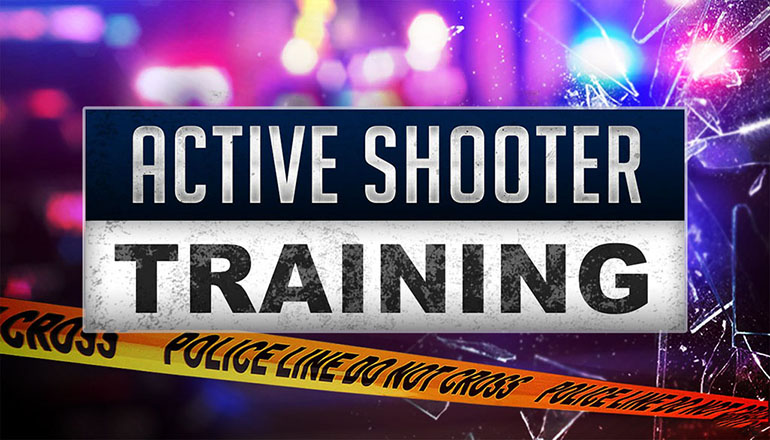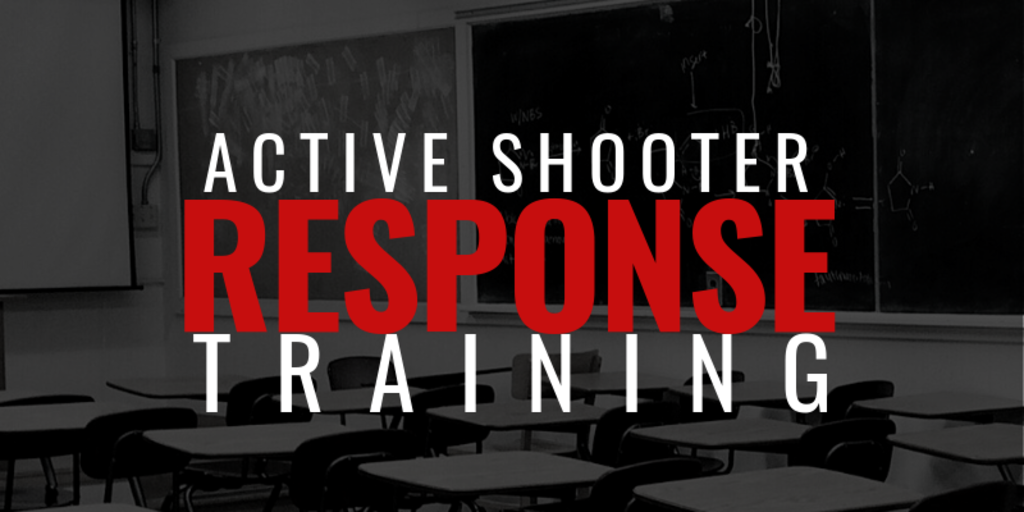How Active Shooter Training Improves Emergency Action Preparedness
How Active Shooter Training Improves Emergency Action Preparedness
Blog Article
Executing Energetic Shooter Training: Ideal Practices for Developing a Safe and Prepared Community Setting
As communities face the distressing reality of energetic shooter events, the application of thorough training programs becomes critical. A successful method rests on not just the growth of customized educational programs that deal with neighborhood threats but also the involvement of diverse stakeholders. By utilizing a range of training techniques, areas can make sure that all participants are outfitted with important skills. The challenge lies in preserving an adaptive framework that evolves with emerging hazards. What are the vital aspects that can transform a conventional training program into a robust version for area strength?

Recognizing the Need for Training
In an age noted by increasing events of violence in public areas, recognizing the demand for active shooter training has never been a lot more vital. Extensive training campaigns can equip participants with the knowledge and skills to respond decisively.
Training fosters a sense of empowerment and preparedness, allowing individuals to feel more safe and secure in their environments. The benefits of energetic shooter training prolong beyond instant reaction; they consist of improving communication methods and enhancing overall security measures within companies.
Key Elements of Effective Programs
Reliable energetic shooter training programs integrate several vital elements that enhance preparedness and feedback abilities. Thorough curriculum growth is important, making sure that training material is pertinent, evidence-based, and tailored to the certain needs of the organization or area. This includes comprehending the dynamics of active shooter occurrences and the psychological influence on people entailed.
2nd, realistic training circumstances must be used to imitate possible circumstances, allowing participants to practice decision-making and reaction techniques in a regulated atmosphere. These drills facilitate muscle mass memory and build self-confidence among participants.
Third, a focus on interaction methods is vital. Developing clear lines of interaction among police, emergency responders, and participants makes certain coordinated feedbacks during an occurrence. Normal updates and refresher programs aid keep communication paths clear and effective.
Fourth, ongoing examination and responses devices should be integrated into the training program - active shooter training. Evaluating the efficiency of training via individual responses and efficiency metrics permits for continual renovation
Last but not least, fostering a culture of safety and preparedness within the area urges vigilance and positive steps, guaranteeing that individuals are not only trained but also taken part in keeping a safe and secure setting.
Engaging Neighborhood Stakeholders

To efficiently involve these stakeholders, it is necessary to interact the purposes and advantages of the training. Organizing informational sessions can help make clear the training's purpose, address worries, and lay out the functions each stakeholder might play. Furthermore, developing a stakeholder advisory board can assist in ongoing dialogue, enabling diverse perspectives and insights to be incorporated into the training program.
Building partnerships with area leaders and organizations is also critical. Their assistance can enhance outreach efforts, boost engagement, and make certain that training is tailored to the special needs of the neighborhood. Furthermore, stakeholders can help in sharing details and sources, strengthening the message of security and look at here now readiness.
Inevitably, involving community stakeholders not only enhances the training campaign but also cultivates a sense of ownership amongst homeowners, leading to a more resilient and informed area qualified of reacting properly to possible hazards.
Training Shipment Approaches
Making use of a variety of training delivery methods is vital to fit the varied understanding designs and requirements of individuals in energetic shooter training programs (active shooter training). Efficient training can take several kinds, consisting of talks, hands-on simulations, on the internet modules, and interactive workshops. Each approach serves a distinct purpose and can improve the overall understanding experience

On the internet components offer flexibility and availability, allowing participants to find out at their very own rate. These can consist of video clips, tests, and discussions to evaluate understanding. Interactive workshops urge group conversations and problem-solving, promoting team effort and interaction skills.
Integrating a mixed approach that integrates these techniques not just improves the training experience but likewise makes sure that individuals are much better prepared to react properly in the event of an active shooter situation (active shooter training). By attending to different Visit This Link discovering choices, organizations can produce a much more educated and responsive neighborhood
Constant Assessment and Renovation
Regular assessment and enhancement of energetic shooter training programs are essential to preserving their relevance and performance. As threats evolve, so must the strategies and methodologies used in training. Continual examination makes sure that training web content reflects the current knowledge on energetic shooter incidents, incorporating lessons picked up from current events and adjusting for emerging patterns.
To facilitate this process, companies must establish responses mechanisms that consist of individual evaluations, specialist testimonials, and incident debriefs. Gathering data on participant performance during drills and exercises is vital, as it highlights areas needing improvement and educates future training sessions. In addition, engaging with regulation enforcement and emergency situation -responders can offer valuable understandings into the usefulness and applicability of training protocols.
Consistently set up reviews of training products and techniques must be mandated, fostering a setting of development and flexibility. Organizations needs to additionally motivate a society of ongoing understanding, where personnel feel encouraged to suggest modifications based upon their experiences. By committing to continual evaluation and enhancement, companies not only improve the effectiveness of their active shooter training programs yet additionally strengthen their overall commitment to safety and security and preparedness within the neighborhood.
Verdict
In final thought, efficient application of active shooter training requires a thorough strategy that prioritizes neighborhood engagement and sensible simulations. By creating customized curricula, incorporating diverse training techniques, and cultivating collaboration among stakeholders, neighborhoods can improve readiness. Constant examination and responses devices are navigate to this site vital for adjusting programs to arising hazards, therefore strengthening overall safety. Eventually, a dedication to continuous training and enhancement grows a culture of vigilance and readiness, guaranteeing a much safer atmosphere for all neighborhood participants.
Report this page